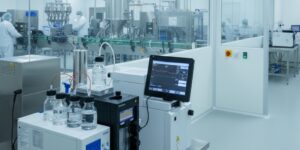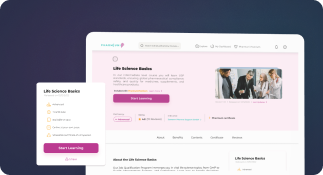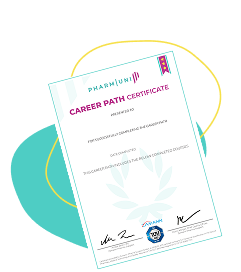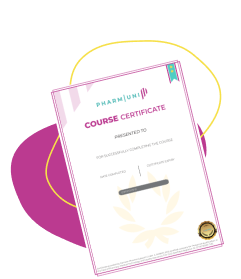Implementing best practices and specialized tools is crucial for maintaining quality in pharmaceutical warehouse storage. These tools, such as Temperature and Humidity Control Systems, ensure the safety and efficacy of stored drugs. They also contribute to overall efficiency by monitoring and controlling environmental conditions. Additionally, Warehouse Management Systems (WMS) play a key role in enhancing warehouse operations. WMS improves inventory accuracy and reduces errors, supporting the quality of pharmaceutical products.
1. Introduction to Pharmaceutical Warehouse
Maintaining quality in pharmaceutical warehouse storage requires the implementation of a series of best practices and specialized tools. These tools not only ensure the safety and efficacy of the drugs stored but also contribute to the overall efficiency and effectiveness of warehouse operations.
Temperature and Humidity Control Systems, for example, are crucial in maintaining the appropriate conditions for the storage of sensitive pharmaceutical products. These systems monitor and control the environmental conditions within the storage facility, ensuring that each product is kept within its required temperature and humidity range, thereby upholding the quality of the pharmaceutical products.
Another essential tool is the Warehouse Management System (WMS). This system enhances the efficiency of warehouse operations, ensuring that products are correctly stored, tracked, and shipped. By reducing errors and improving inventory accuracy, WMS plays an essential role in maintaining the quality of pharmaceutical warehouse storage.

2. Temperature and Humidity Control Systems
Temperature and humidity control systems are essential in maintaining the quality of products in pharmaceutical warehouse storage. These systems help to create a stable environment for the storage of pharmaceutical products, protecting them from damage that could otherwise occur due to temperature or humidity fluctuations. This technology ensures that the products remain within specified temperature and humidity ranges, thereby preserving their efficacy and safety.
These systems not only maintain the desired conditions but also monitor the environment continuously, generating alerts if there are any deviations from the set parameters. This offers an additional layer of protection for the pharmaceutical products and adheres to best practices in pharmaceutical warehouse storage. The systems are designed to record data, providing valuable information on storage conditions over time which can be used for quality assurance and compliance purposes.
2.1. Importance of Temperature and Humidity Control Systems
In pharmaceutical warehouse storage, temperature and humidity control are crucial for preserving product quality. Variations can lead to degradation and reduced shelf life. Effective systems maintain specified limits, ensuring quality preservation.
Regulatory compliance is also essential, with guidelines from bodies like the FDA and EMA. Non-compliance can result in penalties and reputational damage. Control systems align storage with best practices, avoiding regulatory issues.
Product stability is another key role of these systems. Stability refers to the ability of products to retain their properties throughout shelf life. Control systems maintain optimal conditions for stability, ensuring products remain effective and safe until expiry. Overall, temperature and humidity control systems are vital in pharmaceutical warehouse storage for preserving quality, complying with regulations, and maintaining product stability.
2.2. Features of Temperature and Humidity Control Systems
Temperature and humidity control systems in a pharmaceutical warehouse are meticulously designed for precision. They maintain a constant environment regardless of external factors, ensuring storage conditions remain within a specific range suitable for pharmaceutical products. These systems automatically adjust temperature and humidity levels, preventing any deviation from required settings.
A key feature is accurate monitoring, with sensors continuously tracking levels and recording data for future reference. Real-time monitoring helps maintain necessary conditions within the warehouse. Additionally, an alarm system alerts management if temperature and humidity parameters deviate from set values, enabling quick corrective action to uphold quality standards. This feature ensures potential issues are identified early to prevent any impact on product quality. With these advanced systems in place, pharmaceutical warehouses can confidently store products in optimal conditions.
3. Warehouse Management Systems (WMS)
Warehouse Management Systems (WMS) are crucial in pharmaceutical storage for managing operations and inventory. They control product movement within warehouses to ensure proper placement and timing. By implementing best practices, WMS can optimize functionality, improve productivity, accuracy, and efficiency. They maintain optimal storage conditions for pharmaceuticals, safeguarding quality and efficacy. WMS can also monitor conditions and trigger alerts for deviations, aiding in quality maintenance. Modern WMS are cloud-based with real-time tracking features, enhancing visibility and accuracy in inventory management. This is essential in the pharmaceutical industry to prevent overstocking or stockouts and maintain product quality. Overall, WMS play a vital role in ensuring the smooth and efficient operation of pharmaceutical warehouses while upholding the integrity of stored products.
3.1. Role of WMS in Quality Maintenance
A Warehouse Management System (WMS) plays a significant role in maintaining quality within a pharmaceutical warehouse storage. It offers a systematic and organized approach to manage the whole spectrum of warehouse operations from receiving, stocking, and picking, to shipping. By doing so, it minimizes the risks of human errors which can severely compromise the quality and safety of pharmaceutical products.
The WMS can ensure that the products are stored in the right conditions, at the right place, and for the right duration. It can also facilitate efficient stock rotation based on the ‘First In, First Out’ (FIFO) or ‘First Expiry, First Out’ (FEFO) rules. This is crucial in the pharmaceutical industry where products often have a limited shelf life. Proper implementation of these rules prevents the storage of expired or near-expired products which can harm the quality standard.
3.2. Advantages of Implementing WMS
A warehouse management system (WMS) is crucial for maintaining quality in a pharmaceutical warehouse. It offers a comprehensive solution that optimizes warehouse functions by streamlining operations such as packing, picking, shipping, and receiving. This reduces human errors that could compromise product quality.
Additionally, WMS helps maintain accurate inventory levels through real-time data tracking, preventing overstocking or understocking. This ensures pharmaceutical products are not left out for long periods, maintaining their efficacy. Inaccurate inventory levels could lead to order cancellations or delays, negatively impacting customer satisfaction.
Moreover, WMS enhances traceability by tracking every item from entry to exit, crucial in the pharmaceutical industry for quick solutions to quality issues. Overall, implementing a warehouse management system improves efficiency, accuracy, and traceability in maintaining quality within a pharmaceutical warehouse.
4. Barcode and RFID Systems in Pharmaceutical Warehouse
Barcode and RFID systems are among the crucial tools used in maintaining quality in pharmaceutical warehouse storage. These systems provide a reliable way of identifying and tracking pharmaceutical products throughout the storage and distribution process. They play a significant role in ensuring that the right product is stored in the right place and delivered to the right customer at the right time, thereby maintaining quality and reducing errors.
These systems use unique identifiers encoded in barcodes or RFID tags which can be attached to each product or batch of products. This allows for easy tracking and retrieval of information related to each product, such as its manufacturing date, expiry date, batch number, and storage requirements among others. This information is essential in ensuring the quality and safety of pharmaceutical products, as it allows for quick identification and removal of expired or recalled products from the storage facility.
Barcode and RFID systems also enable real-time inventory management, which is crucial for maintaining quality in pharmaceutical warehouse storage. By providing real-time updates on the quantity and location of each product, these systems help to prevent stock-outs and overstocking, which could affect the quality of pharmaceutical products. They also facilitate efficient stock rotation, ensuring that older products are used first before they expire.
4.1. Significance of Barcode and RFID Systems
In the realm of pharmaceutical warehouse storage, barcode and RFID systems are essential. They play a pivotal role in tracking and identifying pharmaceutical products accurately, minimizing errors. These systems are crucial for maintaining the integrity of the supply chain by tagging products with unique identifiers. This ensures accurate tracking from manufacture to delivery, preventing mishandling and misplacement. Barcode and RFID systems streamline inventory management, improving efficiency in warehouse operations. They provide real-time visibility of inventory levels, ensuring proper storage conditions and preventing stock-outs. Overall, these systems contribute to maintaining the quality of pharmaceutical products in storage, underscoring their significance in pharmaceutical warehouse operations.
4.2. Benefits of Barcode and RFID Systems
In the pharmaceutical industry, Barcode and RFID systems play a crucial role in maintaining the quality of storage in warehouses by ensuring accurate identification and tracking of products. The foremost benefit of these systems is increased accuracy. Human errors, which are often inevitable in manual tracking, can be significantly reduced. This leads to accurate inventory control, which is crucial in maintaining the quality of pharmaceutical products.
Another advantage of Barcode and RFID systems is their ability to provide real-time information on inventory. Managers can quickly identify and locate products, significantly enhancing operational efficiency in the warehouse. Real-time tracking also assists in proactive management of expiry dates, ensuring that no outdated pharmaceuticals are stored or shipped out, thereby maintaining the quality of the products.
Barcode and RFID systems also facilitate faster and more efficient recall processes. In case a particular batch of medicine needs to be recalled due to any reason, these systems can quickly and accurately identify the products, reducing the risk of faulty products reaching the consumers. This fast recall action not only safeguards consumer health but also helps maintain the reputation of the pharmaceutical company.
Record-keeping is another area where Barcode and RFID systems provide substantial benefits. They automatically record and update inventory information, eliminating the need for manual data entry and the errors that come with it. These records can be crucial during audits and inspections, demonstrating the warehouse’s adherence to best practices in pharmaceutical storage.
5. Validation of Pharmaceutical Warehouse
A critical component of quality assurance in pharmaceutical warehouse storage is the employment of validation systems. These systems are designed to provide evidence that warehouse processes consistently yield outcomes that meet predetermined specifications. For instance, they validate that storage conditions maintain the appropriate temperature and humidity levels, ensuring the integrity and efficacy of pharmaceutical products.
Validation systems contribute significantly to the adherence of best practices in pharmaceutical warehouse storage. They ensure that storage and inventory management practices align with regulatory standards, reducing the risk of mishandling or contamination of pharmaceutical products. Through the use of these systems, warehouses can confidently assure the quality of their stored products and the reliability of their storage processes. The resulting higher confidence can lead to improved reputations and sales for pharmaceutical companies.
5.1. Need for Validation Systems
In the realm of pharmaceutical warehouse storage, the need for validation systems is paramount. A critical factor in ensuring product quality, validation systems serve to provide documented evidence that storage and handling processes are being executed effectively and consistently. These systems are a testament to the adherence to best practices and are crucial in maintaining the integrity of pharmaceutical products.
Validation systems are also necessary to comply with the stringent regulations imposed by organizations such as the FDA or EMA. These regulatory bodies mandate the use of validation processes in the pharmaceutical industry to ensure that products are consistently produced and controlled according to quality standards. The pharmaceutical warehouse, thus, becomes a pivotal point where validation systems play a significant role in maintaining compliance and ensuring the quality of drugs.
Moreover, the implementation of validation systems significantly reduces the risk of product recalls, which can have substantial negative impacts, including financial losses and damage to the company’s reputation. It also ensures that products stored in the warehouse are safe for their intended use. Therefore, validation systems are critical tools for maintaining quality in pharmaceutical warehouse storage.
5.2. Types of Validation Systems
Validation systems are indispensable in the pharmaceutical industry. Their main role is to ensure that all processes, equipment, and systems used in a warehouse operate effectively and consistently to maintain the quality of pharmaceutical products. The three most common types of validation systems used in pharmaceutical warehouse storage are process validation, cleaning validation, and computer system validation.
Process validation is utilized to confirm that a certain process, such as manufacturing or packaging, consistently produces a result that meets predetermined specifications and quality attributes. This type of validation system is crucial to ensure that pharmaceutical products are consistently produced to the required standards. Process validation involves a series of activities occurring over the lifecycle of the product and process. It includes process design, process qualification, and continued process verification.
Cleaning validation, on the other hand, is used to demonstrate that the methods used to clean the equipment and the environment where pharmaceutical products are stored are effective. This is essential to prevent contamination of pharmaceutical products. Cleaning validation systematically records the cleaning process, demonstrating its effectiveness and repeatability, thus ensuring that no residues are present which could affect product quality.
Conclusion
Utilizing superior tools in pharmaceutical warehouse storage is not an option; it is an absolute requirement. It guarantees the quality and safety of medicinal products, ensuring that they reach the end users without any compromise in their intended effects. Tools discussed in this article, namely Temperature and Humidity Control Systems, Warehouse Management Systems (WMS), Barcode and RFID Systems and Validation Systems, are essential for upholding the stringent quality requirements in pharmaceutical storage.
Temperature and Humidity Control Systems maintain the ideal storage conditions for sensitive pharmaceutical products. Warehouse Management Systems enable efficient tracking and management of goods within the warehouse, ensuring optimal inventory control and reduced errors. Barcode and RFID Systems provide an additional layer of accuracy and efficiency, ensuring every product is correctly identified and tracked. Validation Systems provide documented evidence that the storage and handling processes consistently deliver the expected outcomes, an essential aspect of maintaining best practices in a pharmaceutical warehouse.
Each of these tools plays a unique and critical role in maintaining quality, and together they form the backbone of any well-managed pharmaceutical warehouse.

Ershad Moradi
Content Marketing Specialist

Pharma Industrial Training Certificate: Career Outcomes, Jobs, and ROI (2025)
A Pharma Industrial Training Certificate can significantly enhance your career in the pharmaceutical industry. This certificate equips you with hands-on experience in Good Manufacturing Practices (GMP), documentation, and manufacturing processes—skills that are directly applicable in various pharmaceutical roles.

Certificate in Pharmaceutical Manufacturing: Complete Career Guide (2025)
A Certificate in Pharmaceutical Manufacturing gives you a fast, structured way into GMP-based production roles. You learn core topics such as GMP rules, manufacturing processes, documentation, and QA/QC. In 6–12 months, you move from theory to shop-floor skills and boost your chances of landing a stable pharma job.

Computer System Validation in Pharma 2025 Guide
Computer System Validation in pharma keeps your digital systems reliable, compliant, and inspection ready. In this practical CSV guide for 2025, you learn core regulations (21 CFR Part 11, EU Annex 11, GAMP 5), step-by-step lifecycle activities, documentation expectations, and job-relevant skills so you protect data integrity and support safe, efficient pharmaceutical operations.



